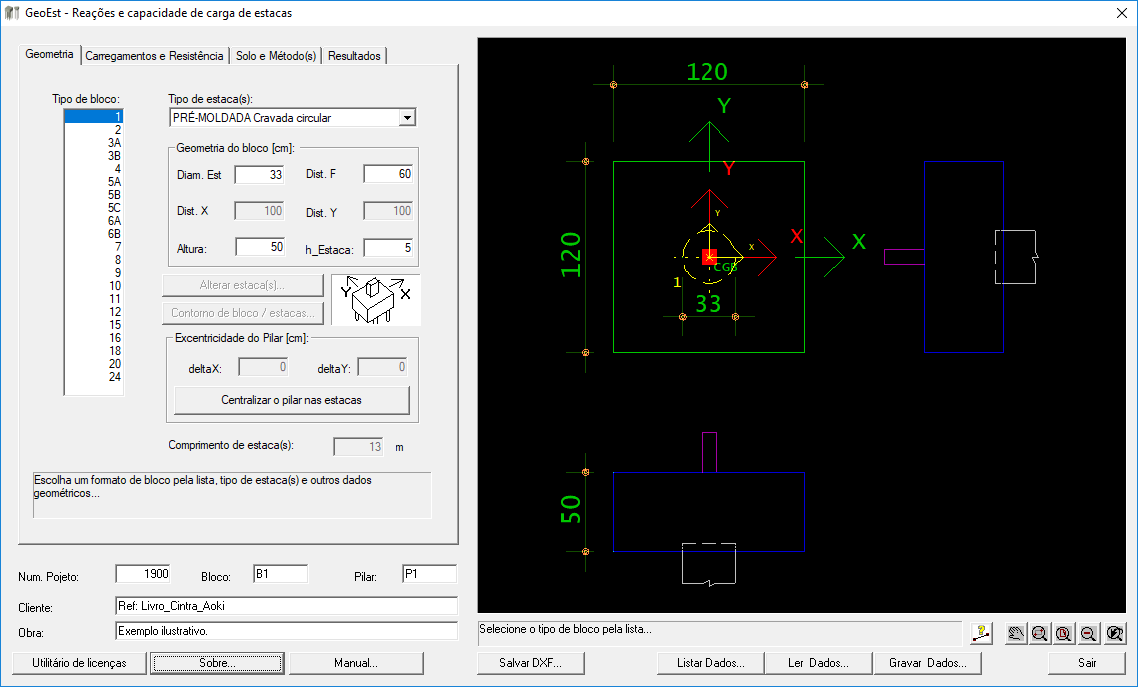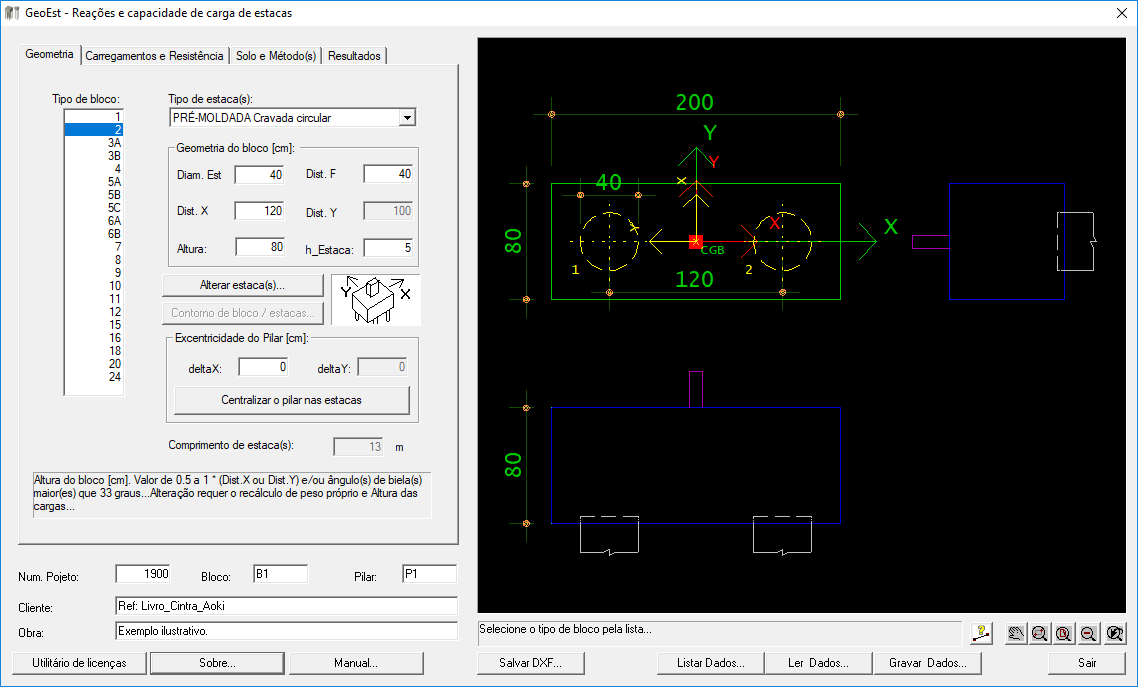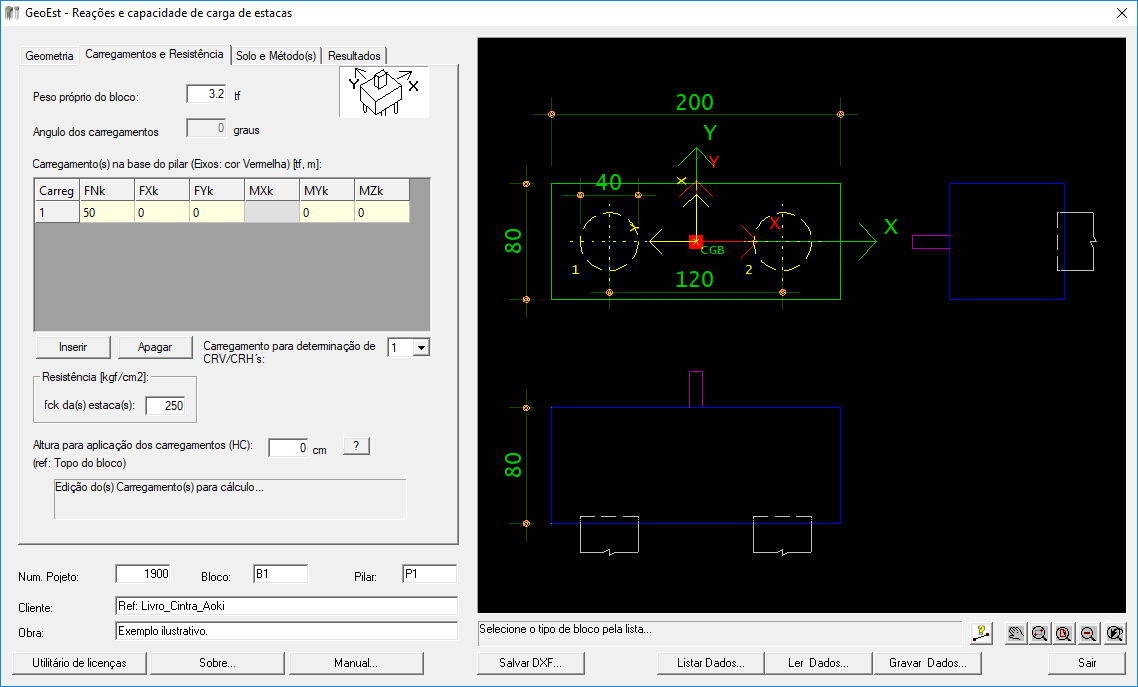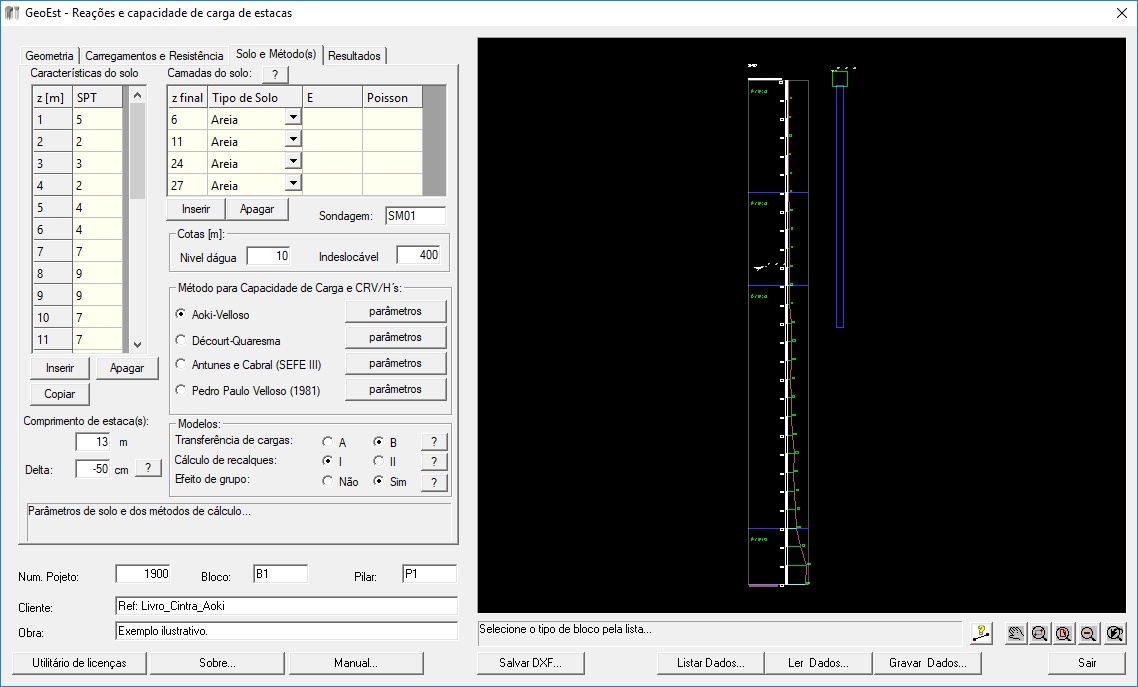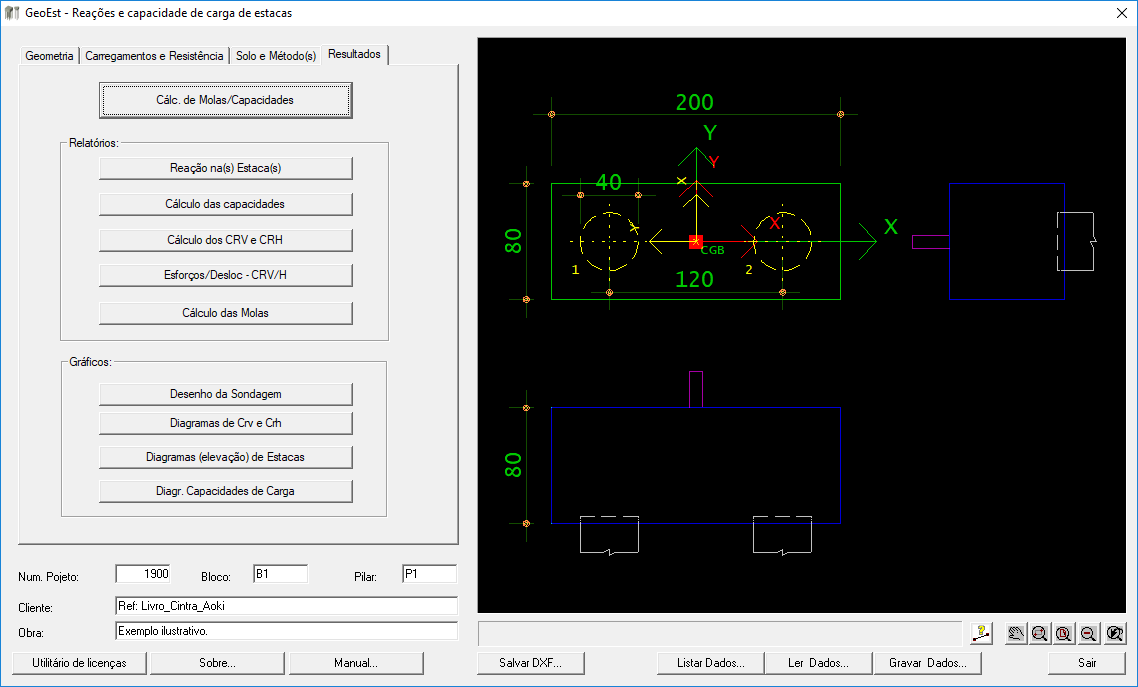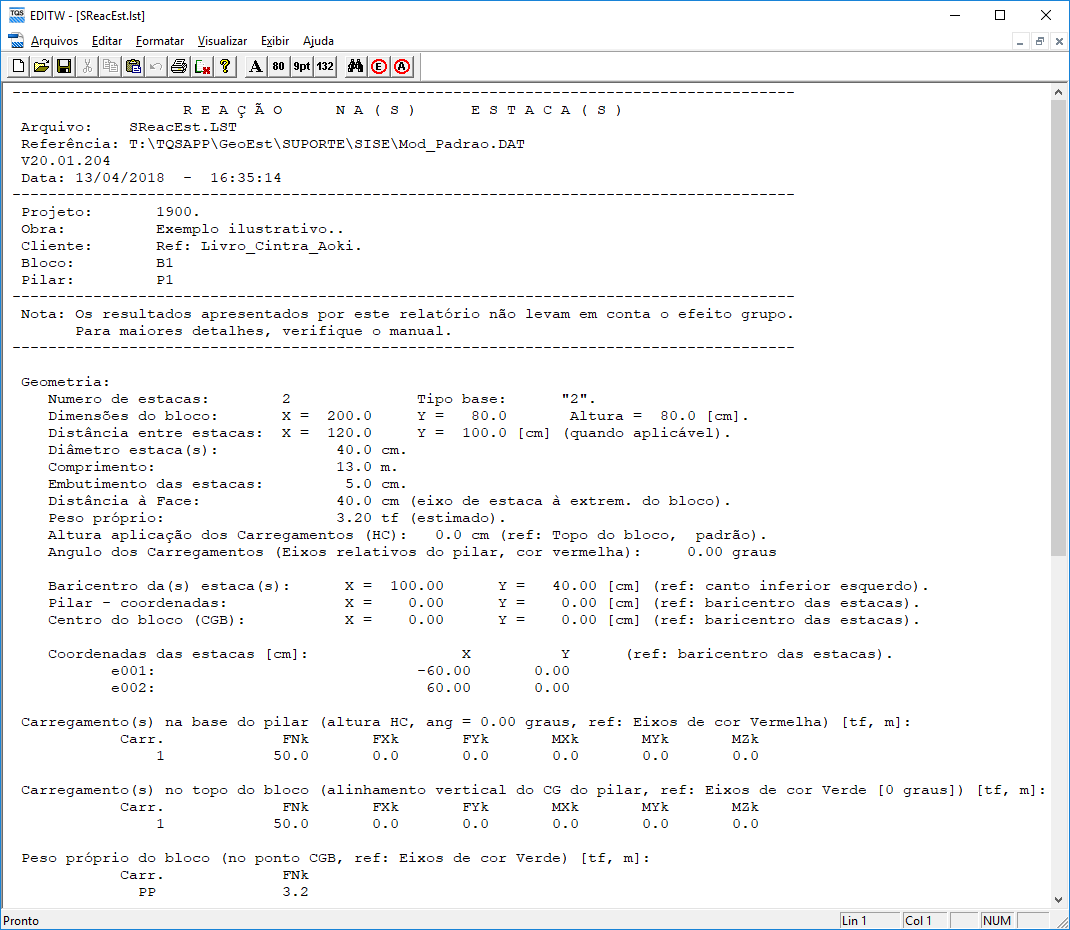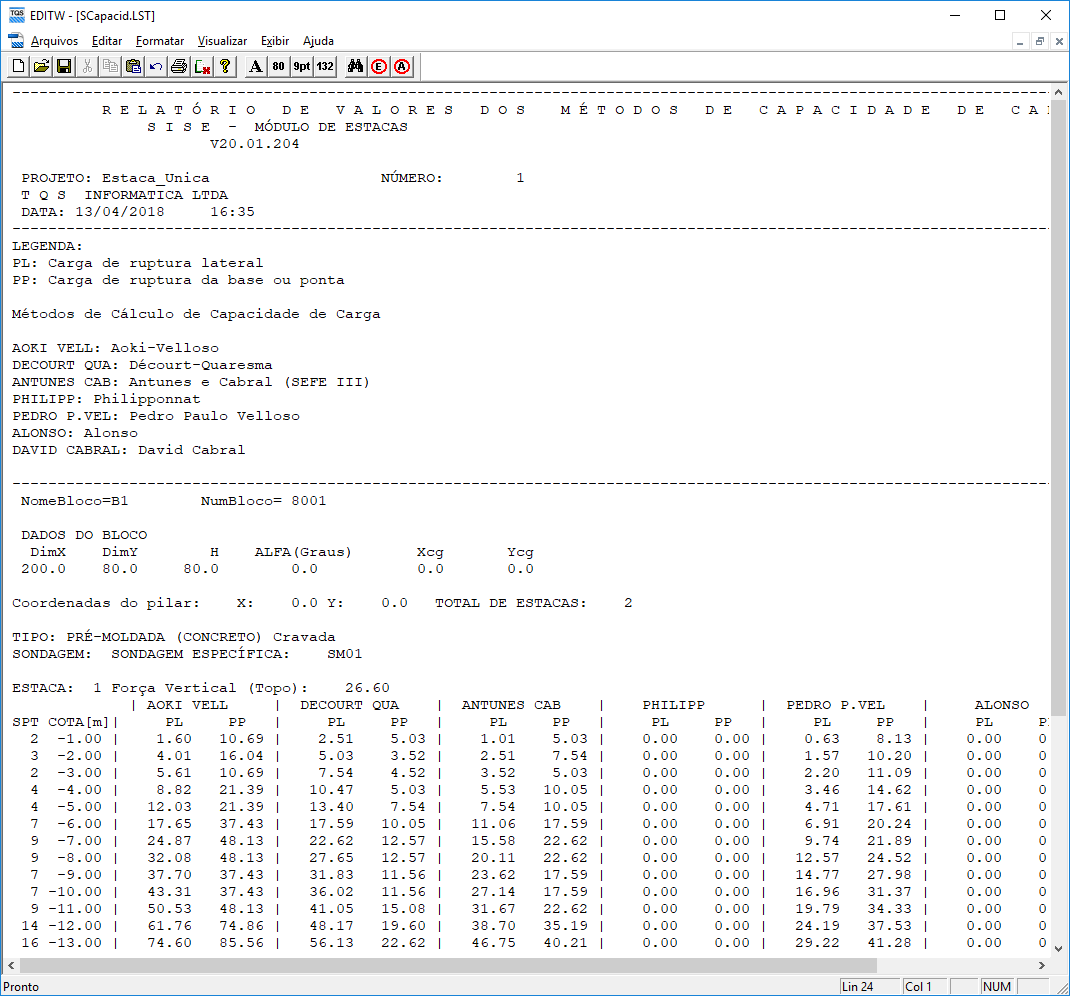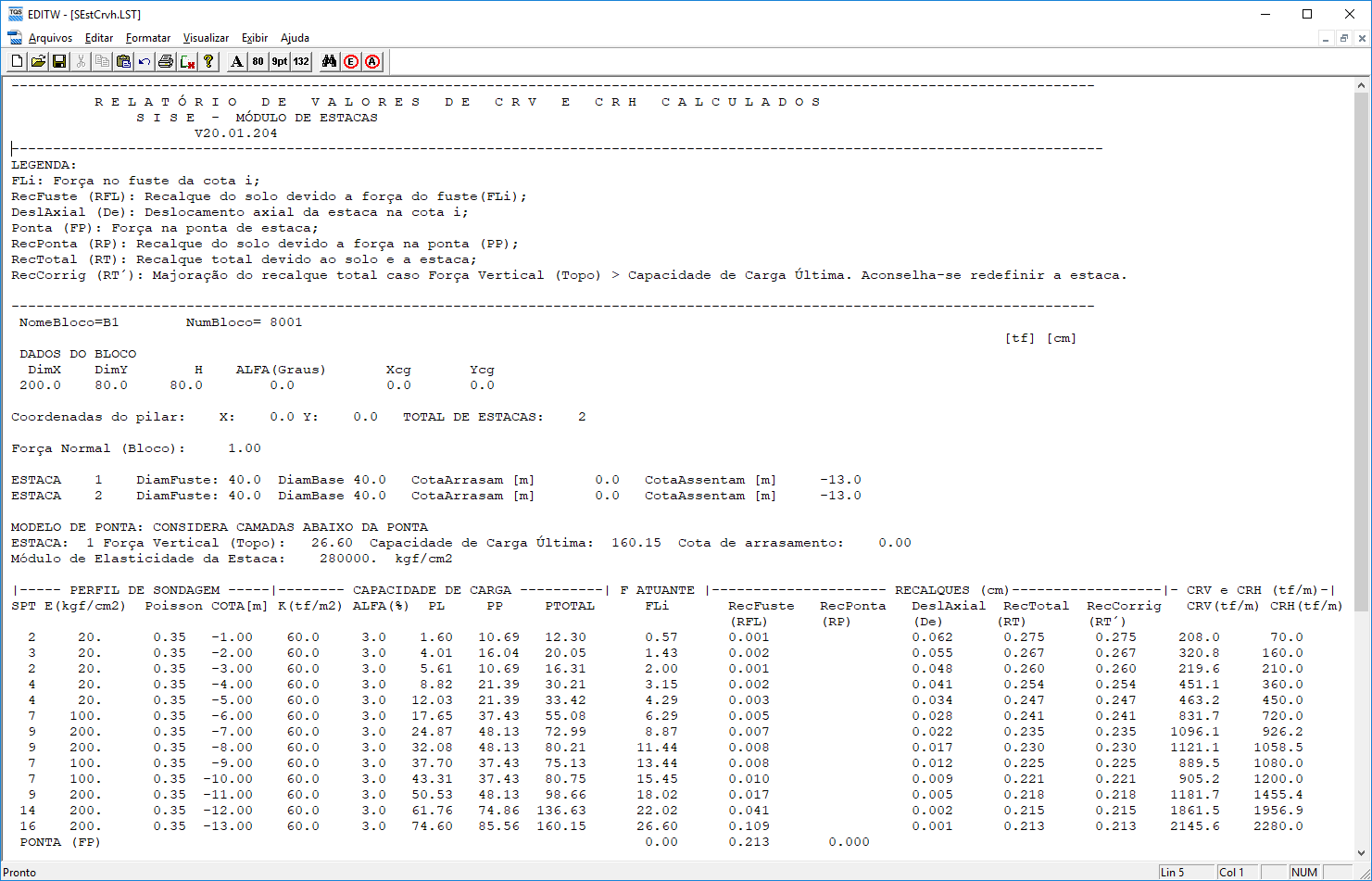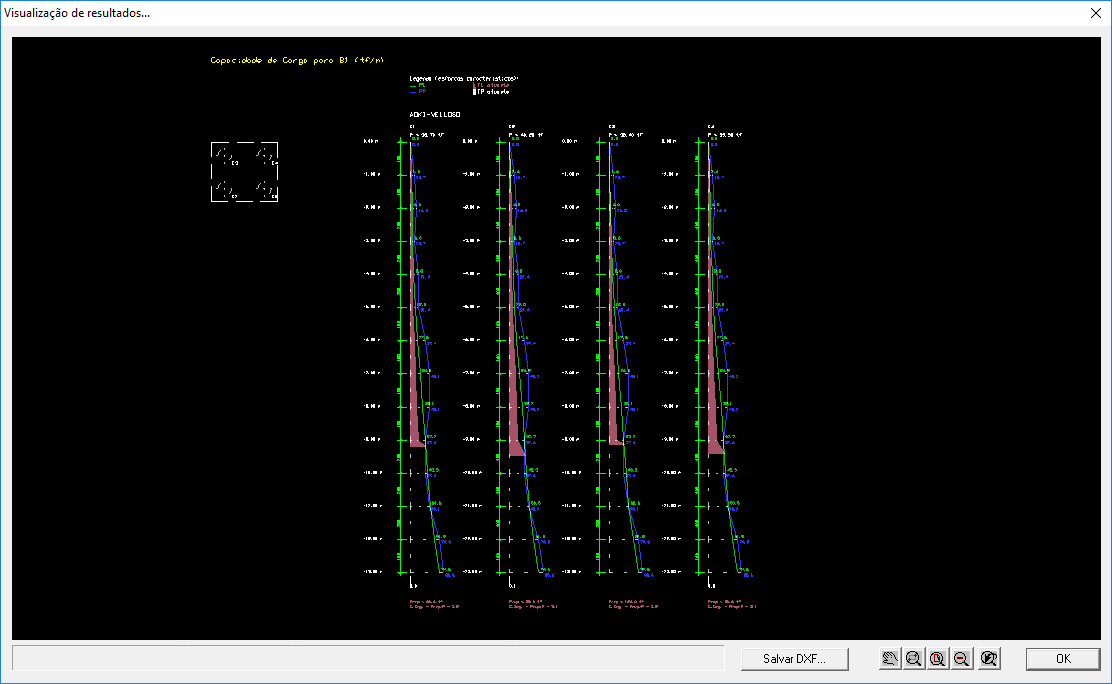Aplicativo para análise estrutural do conjunto BLOCO/ESTACA/SOLO.
Principais características técnicas:
-Estacas:
-Capacidade de carga
-Esforços solicitantes
-Recalques
-Bloco:
-Recalques e rotações
-Coeficientes de “molas” a translação e a rotação
O bloco é rígido e pode conter até 30 estacas. Podem ser aplicados até 50 casos de carregamentos. Excentricidades podem ser consideradas e inúmeros casos de carregamentos são permitidos.
The presence of the soil is simulated by incorporating elastic bindings in the structural model at every meter of the pile. These bindings, “springs”, vertical and horizontal along the pile, are determined from the association of several specific parameters of each layer of the soil and borehole (SPT) to the method of calculating the selected load capacity. When determining the settlement of the set of piles, and consequently of the elastic bindings, the group effect between piles is considered in the Mindlin equations for infinite medium and Steinbrenner's artifice for finite layers until the non displaceable.
Four methods for calculating the load capacity of piles are available: Aoki-Velloso, Décourt-Quaresma, Antunes and Cabral (SEFE III) and Pedro Paulo Velloso (1981). The models for transferring loads from the piles to the soil include the total or partial mobilization of the pile.
Several alphanumeric and graphical reports are generated containing the requests in the piles (normal force, shear and bending moments), in addition to the settlements and rotations at the top of the pile cap and the respective spring coefficients in 6 directions that correspond to the rigidity of the pile/soil set, which can be incorporated into the building.

